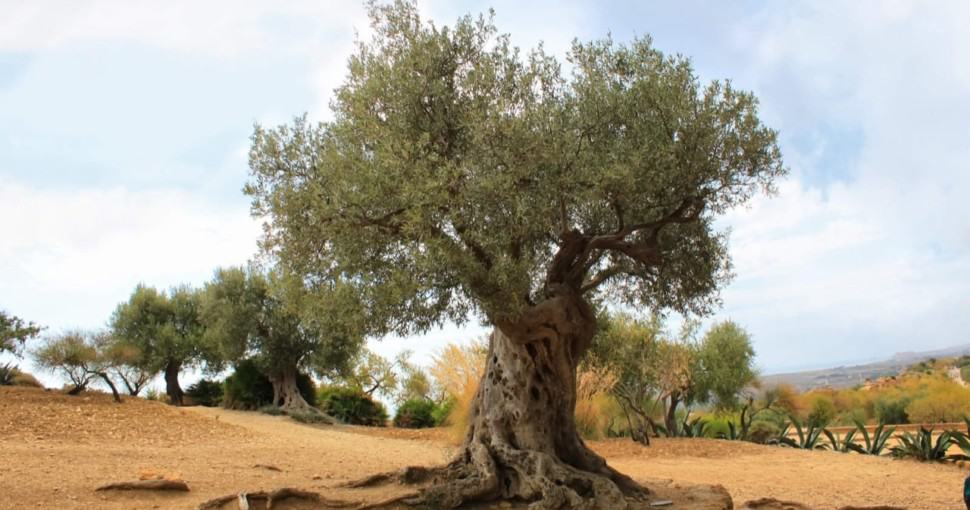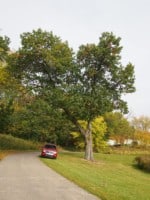There are at least 72 olive tree varieties. However, it isn’t always possible to grow them in your area. Thus, we’ve put together a list of alternatives. Some of these may be invasive and do damage to your property and garden, depending on where you live. However, others might be native to your area and be ideal alternatives to an olive tree.
Contents
There are many trees similar to olive trees. Excellent choices for those living in the United States are Silverberry or Silver Buffaloberry. However, despite Autumn Olive and Russian Olive not being real olive trees, these are not suitable alternatives if you live in the States.
The concern over invasive olive trees has led to a lot of confusion in the United States. Part of the confusion is due to a fair chunk of these problematic trees not being real olive trees despite “olive” in their common name. Also, some people can’t grow olive trees in their area due to climate and soil conditions but want a tree with silver leaves.
1. Autumn Olive
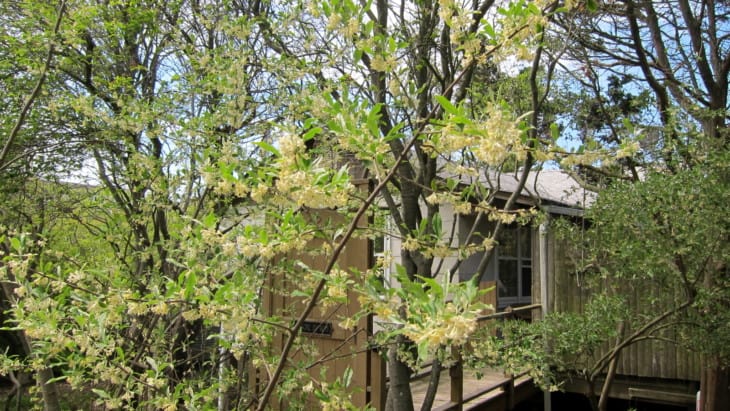
The autumn olive, Elaeagnus umbellata Thunb., is an Asia tree brought over to the United States circa 1830. The tree is classified as an invasive species by the U.S. Department of Agriculture. It’s also known as Elaeagnus, oleaster, and Japanese silverberry. Autumn olive looks similar to a real olive tree and the Russian olive tree but is not actually an olive tree.
The autumn olive gained popularity in the United States because it helped control erosion and quickly provided habitat for wildlife. However, it has had a devastating effect on native plants, including precious meadows and grasslands. It eliminates the competition by shading them out and through a process known as “allelopathy,” where the soil is altered.
The autumn olive is often identified by its silver leaves and red berries. Cutting or burning the tree can be counterproductive, as it often results in more autumn olive trees. Seedlings can be hand-pulled. But the only safe way to eliminate bigger trees is regularly applying herbicide to the trunk from summer until winter. Do consult a professional.
2. Russian Olive “Quicksilver”
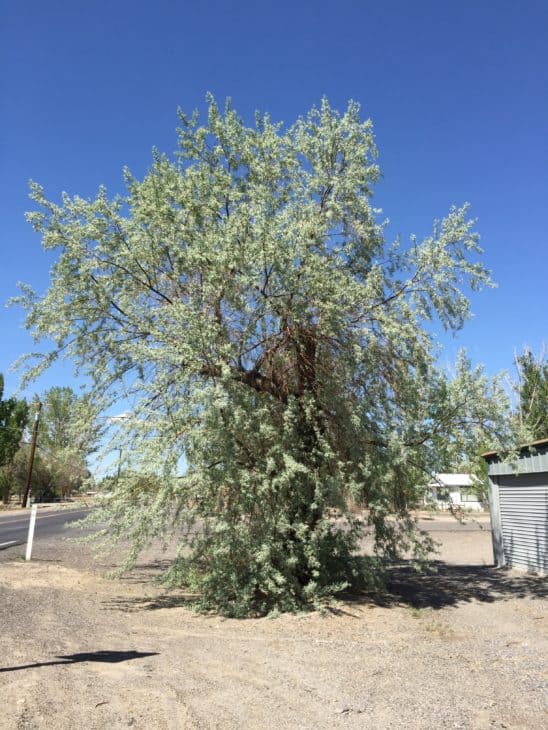
The Russian olive, Elaeagnus angustifolia, is routinely mistaken for the autumn olive. However, while they are related and both faux-olives, they are different trees. It, too, is an invasive plant both in the United States and other countries, including Mexico and Canada. Its other common names include quicksilver and, like the autumn olive, oleaster, and Elaeagnus.
The Russian olive is also routinely mistaken for the American silverberry, which is not an invasive species. If you are uncertain which tree you have on your property, do consult a professional.
Nobody is precisely sure when the Russian olive was brought over to North America, but it is thought to be circa 1900. Like the autumn olive, it was used extensively to combat erosion.
To get rid of it, you need to wear protective clothing due to its thorns. It is suggested to use the cut stump method: cutting the tree down then adding natural herbicide. Then, follow by applying vinegar for two months. Again, when in doubt, consult a professional.
3. Saltcedar (tamarisk)
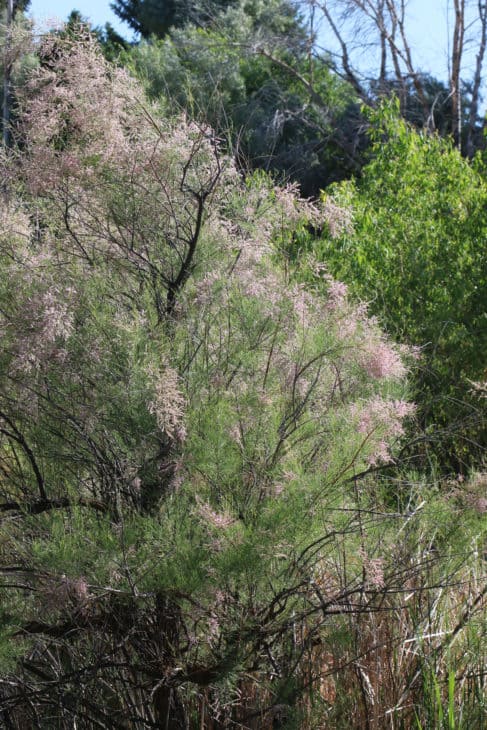
The saltcedar, also called tamarisk, is sometimes mistaken for an olive variety when it isn’t in bloom. However, the pink and, occasionally white, flowered brush tree is a menace, sucking up valuable water needed for drinking, agriculture, and native plants while adding salt to the soil. One study showed a tree consuming 200 gallons of water a day.
However, getting rid of saltcedar is incredibly hard. Burning and herbicides rarely work. In the 90s, the “bio beetle” was released by the U.S. Department of Agriculture. However, they ended up having to ban the insect because it was destroying the flycatcher’s habitat.
While some birds, such as the hummingbird, love saltcedar, overall, it is horrific to any area it takes root. Initial treatments rarely fully eradicates saltcedar. Complete eradication of saltcedar can take up to five years of persistent retreating. Do consult professionals if you need help.
4. Silverberry
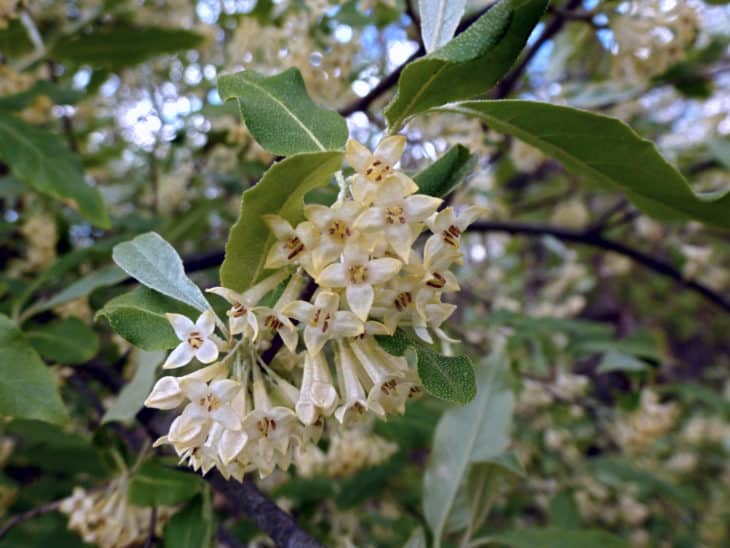
The silverberry, Elaeagnus commutata Bernh., is related to the invasive trees Russian and autumn olive. However, the silverberry is a North American native, making it a safe olive alternative for those living in that part of the world. The silverberry is also known as American silverberry, wild olive, and wolf willow. However, it is not a real olive tree.
The silverberry reaches up to 12 feet (3.5 m) and has many positives:
- Fast-growing
- Long-lived
- Disease and pest resistant
- Drought tolerant
- Suitable for most cold climates
- Hardy enough to be used as a windbreak
The silverberry prefers full sun and dislikes waterlogged soil. It can easily be shaped and is sometimes pruned to create hedges. Its white flowers appear May – June.
5. Silver Buffaloberry
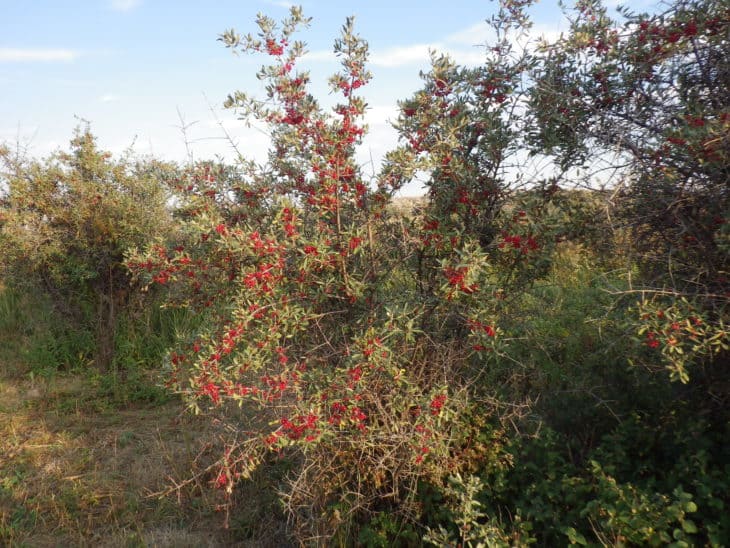
The silver buffaloberry is another North American native tree with silver on the undersides of its leaves and produces red berries. It is a non-invasive relative of the Russian olive, complete with thorns. It reaches heights of 6 – 20 feet (1.8 – 6 m), loves full sun, and its sour berries are edible. However, you need a male and female variety within pollination proximity to get fruit.
The silver buffaloberry has many positives:
- Valued by native bees
- Tolerant of poor soil, including rocky, dry, and alkaline
- Low maintenance
- Drought tolerant
- Salt tolerant
- Nitrogen fixer
- Withstands extreme cold
6. Russet Buffaloberry
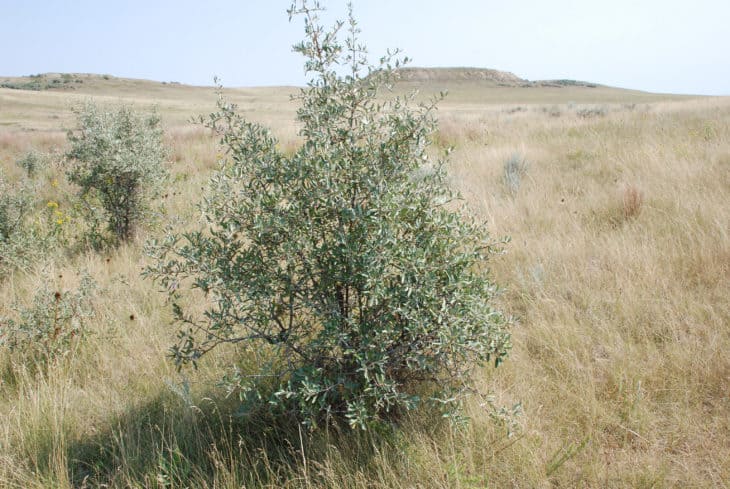
The russet buffaloberry is the smaller cousin to the silver buffaloberry, reaching only 6 – 12 feet (1.8 – 3.5 m). Its leaves are less silver and more of a whitish-gray. However, it still produces red berries if both a male and female plant is present. These are adored by grizzly and black bears. The shrub itself is enjoyed by snowshoe hares, elk, and deer.
The russet isn’t as tough as its bigger, silver cousin and prefers moist soil. However, it can survive in dryer conditions and is still fairly robust. Thus, it also has many of the same benefits as the silver:
- Valued by native bees
- Tolerant of poor soil, including rocky, dry, and alkaline
- Low maintenance
- Drought tolerant
- Nitrogen fixer
- Withstands extreme cold
7. Ash Tree (Fraxinus Americana)
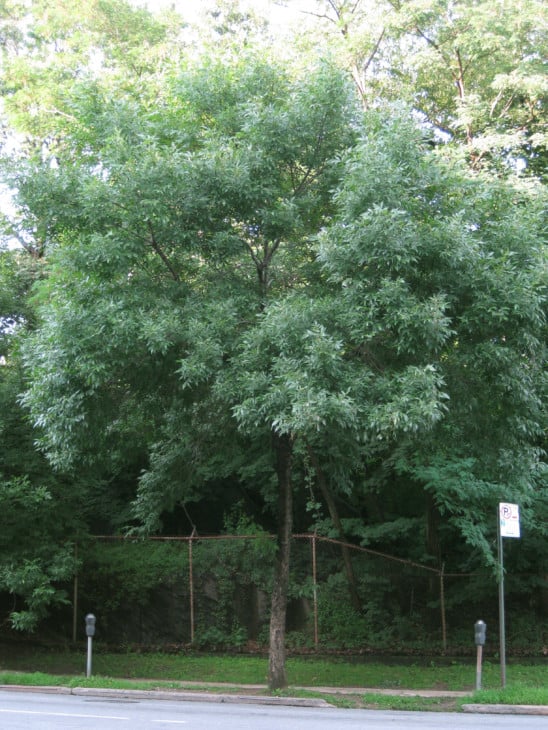
Ash Trees (Fraxinus Americana) are native to North Carolina and can be spotted throughout the United States, with the only exception being the lower coastal regions. Ash trees can grow to 120 feet tall when fully mature, thanks to their 3-foot thick tree trunk.
Ash trees look like Olive trees when they are immature. They have small green leaves that grow in clusters of 5 to 9 leaflets. Their bark is yellow-brown to light gray. Small pale green and purple petalless flowers sprout from pointed ridges in spring.
Officials have cautioned against planting new Ash trees due to their susceptibility to a pest called the emerald ash borer. This bug feeds on the bark and burrows deep within the Ash tree, typically killing it within five years.

